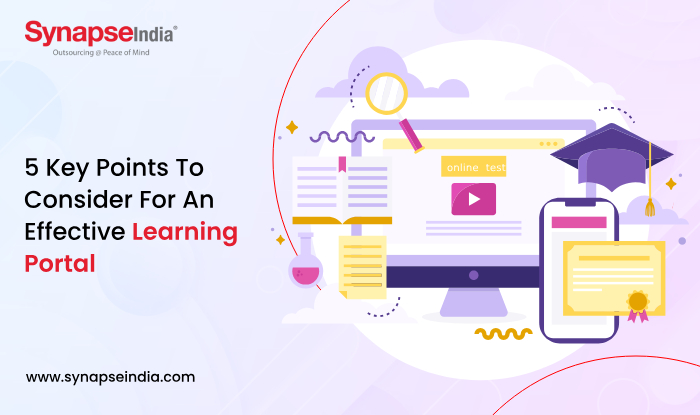 06 Jun 2024
06 Jun 2024
Organizations are increasingly using learning portals to give their employees flexible and accessible learning opportunities in the fast-paced world of today, where career and personal growth depend on ongoing education. Employees can access a variety of learning resources, including courses, training modules, videos, and other educational materials, on a centralized platform called a learning portal. However not all learning portals are made equal, so businesses need to take into account several important factors to make sure their portal is successful in fulfilling the demands of their users. This blog post will discuss five crucial elements to take into account while creating and setting up a learning portal for your company.

The user experience of a learning site is one of its most important features. A well-designed e-learning portal needs to be visually appealing, simple to use, and intuitive. Without becoming bogged down in a confusing web of options and connections, users should be able to locate the information they require fast and effectively. Because many students may use their smartphones or tablets to access the site, mobile responsiveness should be taken into account. Furthermore, personalization tools can improve the user experience by letting students tailor their educational path according to their preferences, goals, and areas of interest.
The caliber and applicability of the content on a learning portal determine its success. Companies should create or select excellent training resources that are in line with their learning objectives and customized to the requirements of their staff. Up-to-date, captivating, and interactive content should be provided in a variety of formats to suit various learning preferences. Achieving a balance between fundamental information and practical skills is crucial to enable learners to effectively apply their acquired knowledge to real-world scenarios. To maintain learners' interest and motivation, content must be updated and refreshed regularly.
Organizations should put strong learning analytics and monitoring tools in place to monitor student development and gauge the success of a learning portal. Administrators can collect information on assessment results, completion rates, student engagement, and other pertinent metrics with the use of these tools. Organizations may maximize the learning experience by identifying areas for improvement, gaining insightful knowledge about learner behavior, and making data-driven decisions. In addition, learning analytics can be used to identify high-achieving students who can act as mentors or role models, suggest pertinent information, and tailor learning pathways.

Collaborative and social learning among users should be facilitated via effective learning portals. Learners can interact with peers, exchange knowledge, pose questions, and have meaningful conversations with the help of features like discussion boards, chat rooms, and social media integration. Group projects, case studies, and peer reviews are examples of collaborative learning activities that encourage active learning and a sense of community among students. Organizations may tap the collective expertise of their workforce and foster a culture of continual learning and information sharing by providing chances for contact and collaboration.
Finally, companies need to make sure that their learning site works well with the technology and processes that are already in place. Compatibility with learning management systems (LMS), content management systems (CMS), HRMS, and other pertinent platforms are examples of this. Data sharing, single sign-on capabilities, automated workflows, and simplified administration are made possible by integration, which facilitates resource access for learners as well as easier administration for administrators overseeing learning projects. Additionally, consumers' access to a wider variety of learning opportunities is increased through connection with external content providers, such as industry groups or online course markets.
Organizations can use an efficient learning portal as a potent instrument to improve performance, foster employee growth, and maintain their competitiveness in the quickly changing business environment of today. Through careful consideration of essential elements like user experience, content quality, learning analytics, collaboration, and integration, organizations can create and execute learning portals that yield measurable outcomes and enable their employees to thrive. Investing in a strong learning portal is becoming more and more necessary to support an environment where learning and development are continuously prioritized as strategic goals within enterprises.

